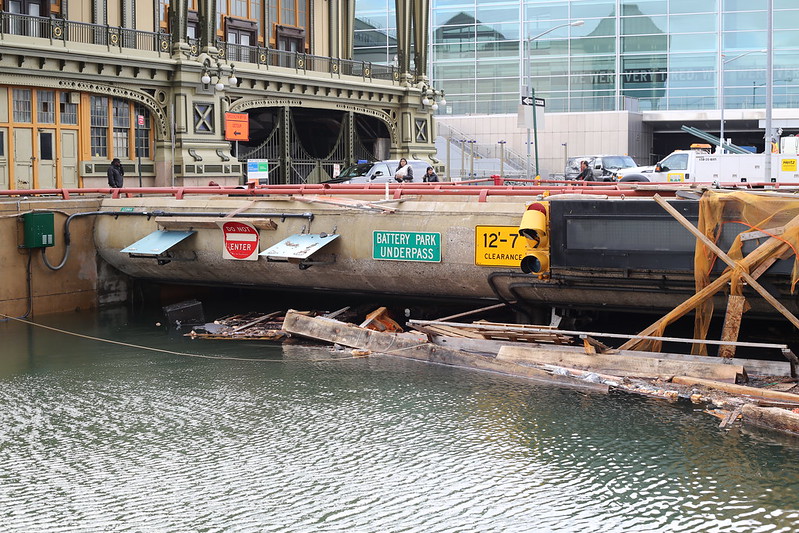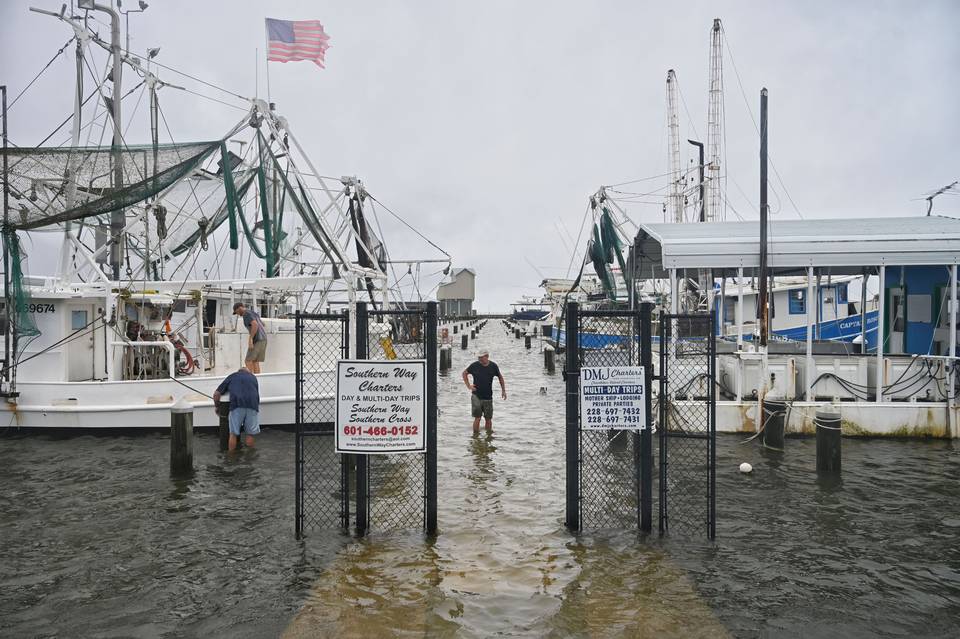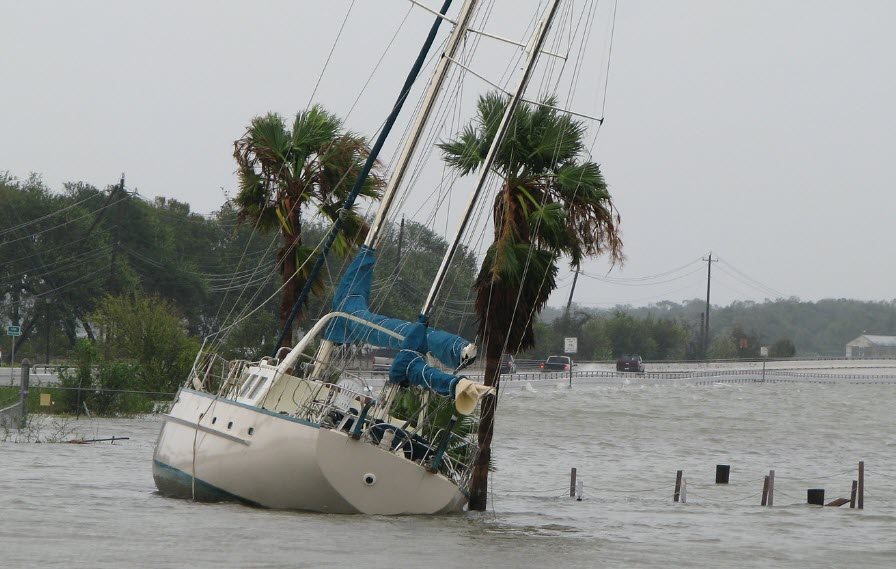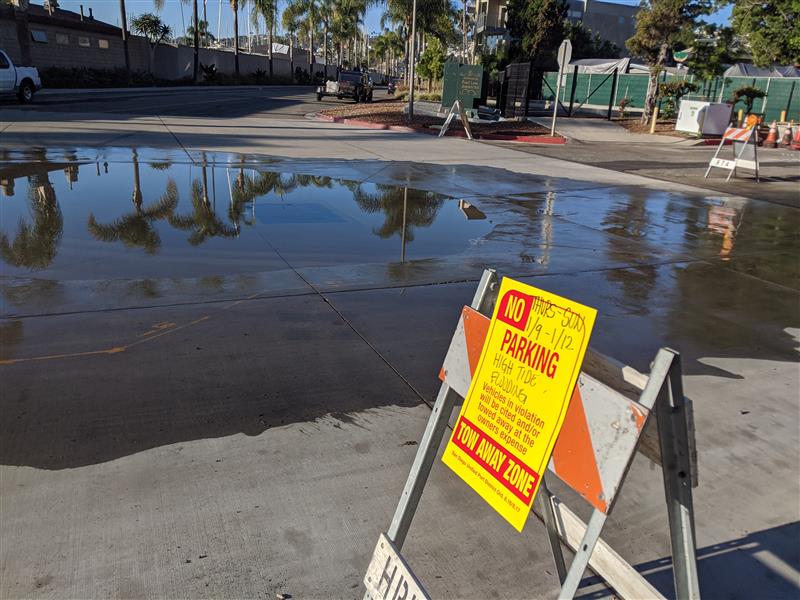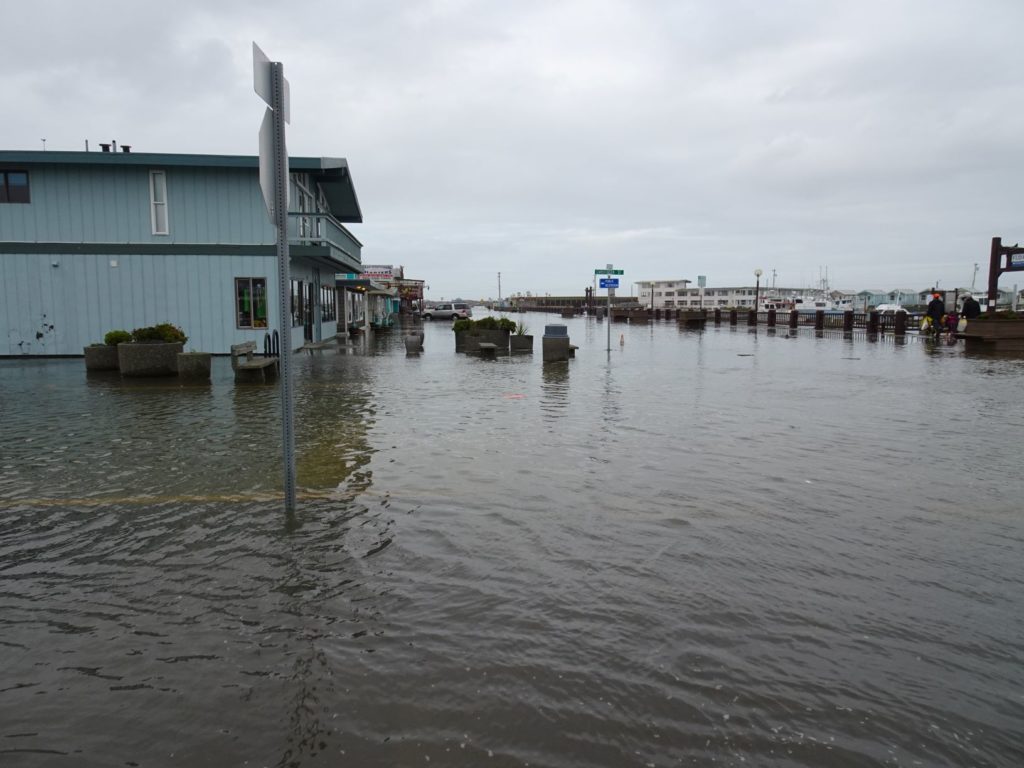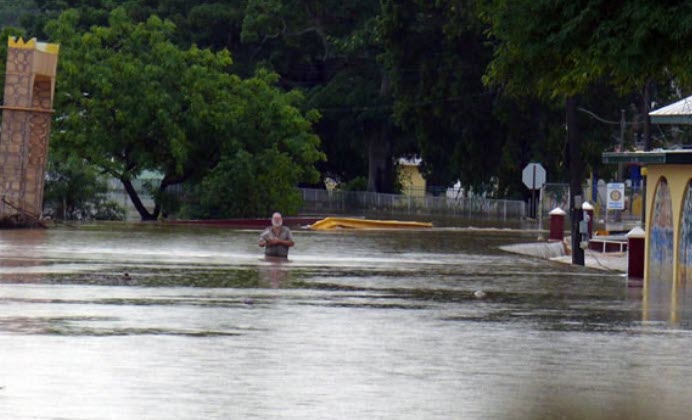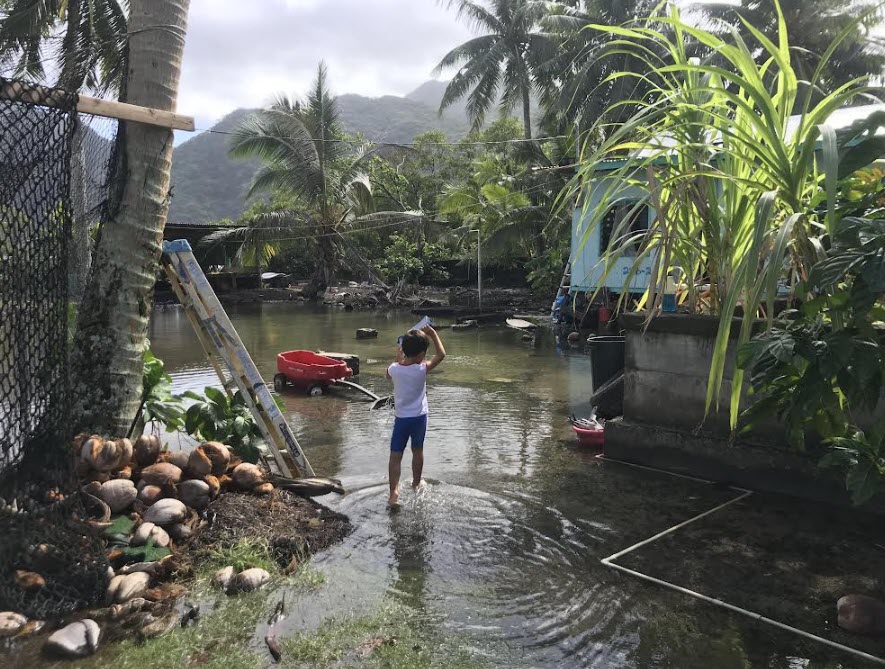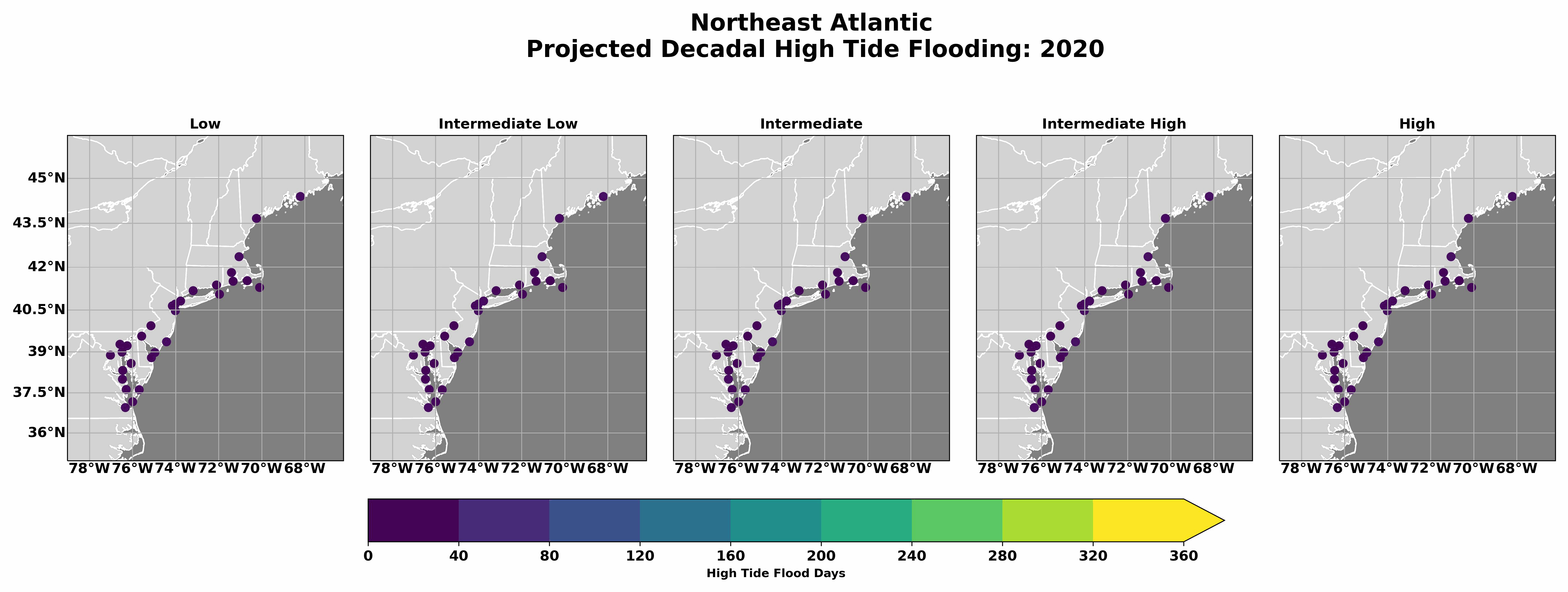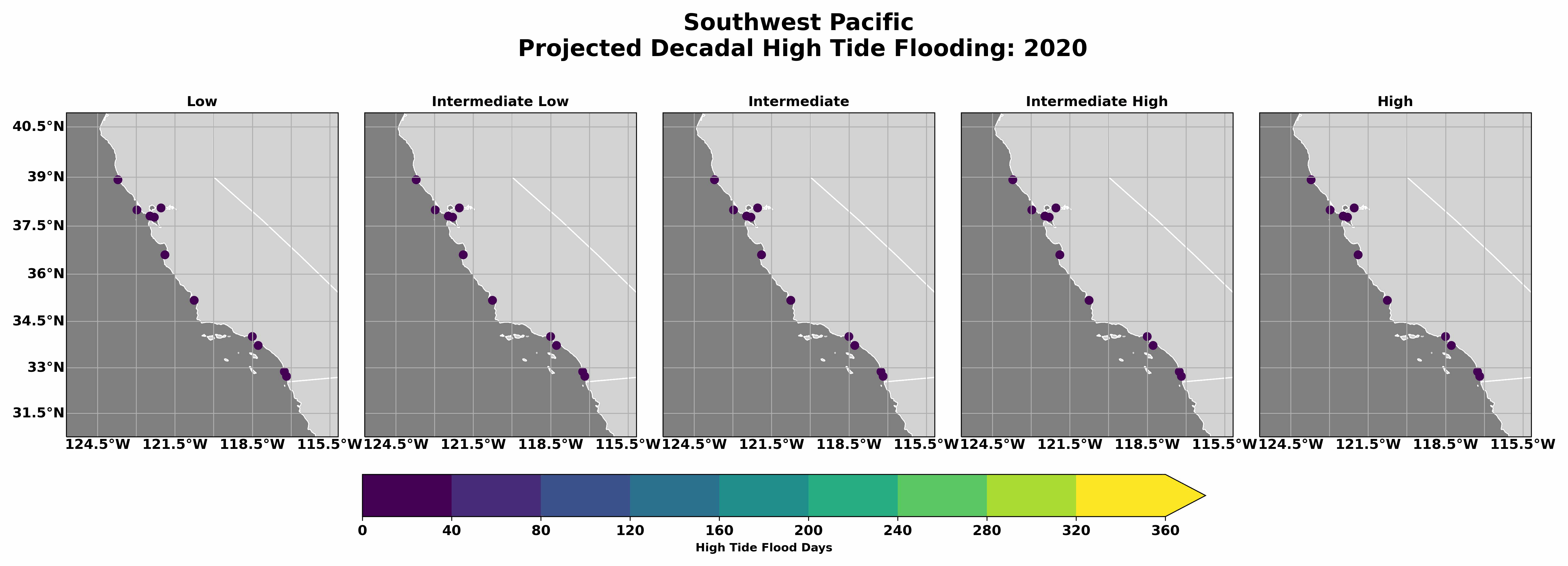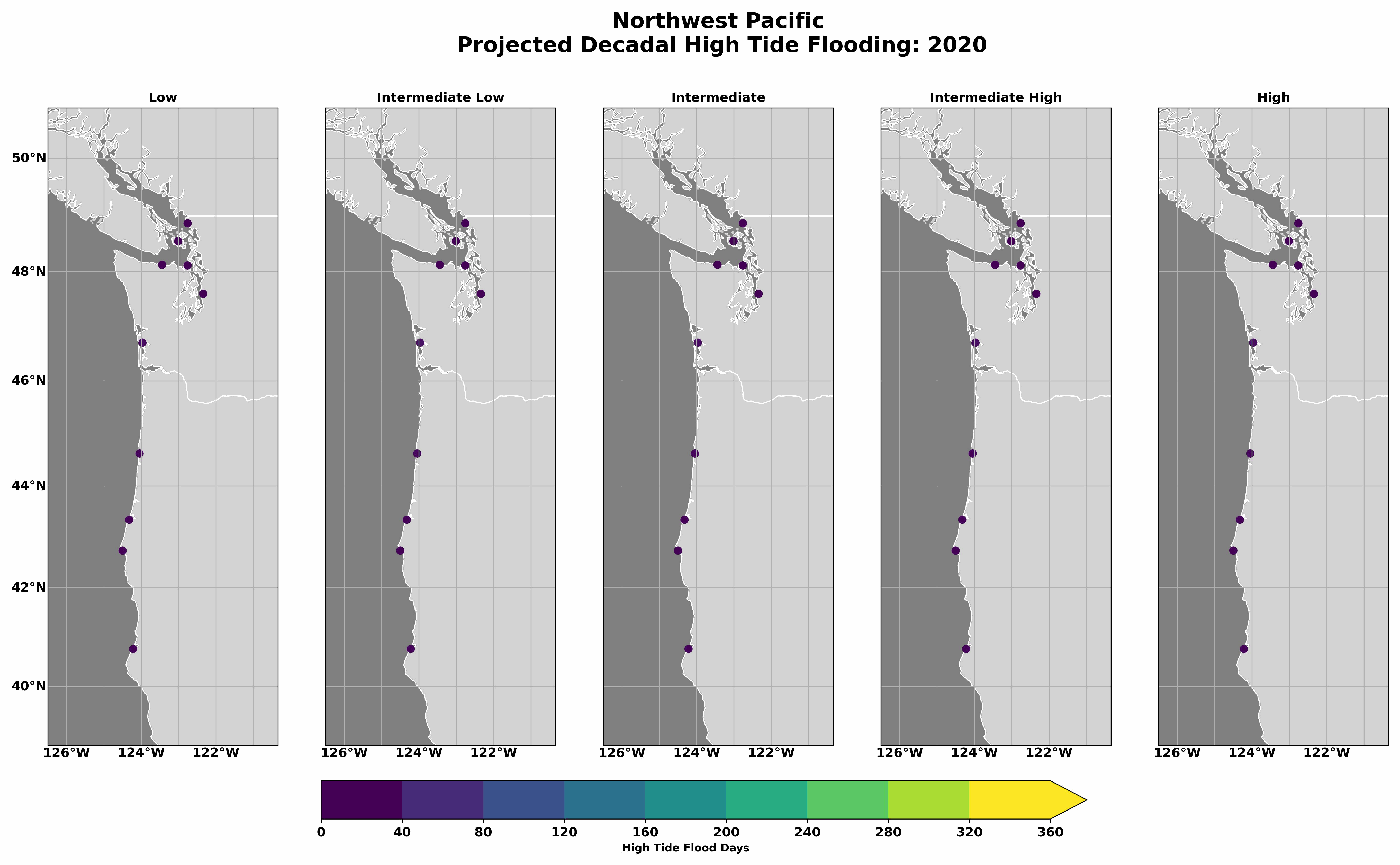The State of High Tide Flooding and 2022 Outlook
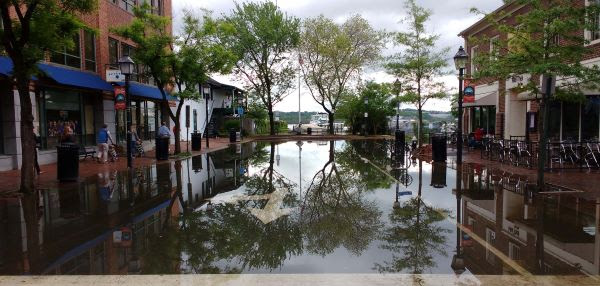
Location: Alexandria, Virginia, 2015
High-tide flooding, often referred to as “king tides,” “nuisance,” or “sunny day” flooding, is becoming increasingly common due to years of sea level rise. High Tide Flooding (HTF) is defined as the overflow or excess accumulation of ocean water at high tide that covers low-lying areas, and typically occurs when tides reach anywhere from 1.75 to 2 feet above the daily average high tide and start spilling onto streets or bubbling up from storm drains. As sea level rise continues, damaging floods that happened decades ago only during a storm now happen more regularly, like during a full-moon or with a change in prevailing winds or currents.
Coastal communities across the U.S. continue to experience more frequent high-tide flooding, forcing residents and visitors to deal with flooded shorelines, streets and basements. Similar to 2022 meteorological conditions, many regional HTF frequencies were lower, likely related to continued effects of La Niña; a periodic meteorological event affecting coastal storm tracks and bringing cooler than normal ocean surface temperature and lower than normal sea surface heights along parts of the Pacific Ocean, including the western U.S.
As science advances, so does our ability to predict high tide flooding. This year’s Outlook is enhanced by methods outlined in the U.S. Federal Sea Level Rise and Coastal Flood Hazard Task Force’s 2022 Sea Level Rise Technical Report; an inter-agency effort to update sea level rise scenarios to emphasize the amount of expected rise by 2050 to inform community planning initiatives.
National Outlook:
- The frequency of high tide flooding across the country continues to increase. This year, due to lingering climatological effects from La Niña and Earth’s location in the perigean cycle, coastal areas aren't predicted to experience a record number of flood events compared to last year.
- This year, eastern U.S. and Gulf state communities will continue to experience an over 150% increase in HTF compared to the year 2000, limited only by periodic weather and climate events.
- High tide flooding is anticipated to continue with frequency over the next meteorological year with a National outlook of 3 to 7 days likely.
- From May 2021 to April 2022, 3 locations monitored by NOAA tied or broke their records for the number of HTF days along the U.S. Southeast Atlantic and Gulf coastlines. On the Atlantic coast, Reedy Point, DE broke its previous record with 6 events, and Springmaid Pier, SC, near Myrtle Beach, tied its 2021 record with 11 high tide flooding events. In the Pacific, Kwajalein Island observed 4 high tide flooding days, also one more event than in 2021.
- Regional locations like the Northeast Atlantic, Western Gulf, Southeast Atlantic and Eastern Gulf coasts may see some of the highest levels. Lingering effects of La Nina will minimize the amount of HTF expected along Pacific and U.S. Island coastlines. These stats do not include the potential for flooding due to wave action and/or weather-related events.
- By 2050, high tide flooding on a national scale is expected to be between about 45 - 70 days/year on average. These long term projections are based on the range of expected relative sea level rise by 2050 using information from the 2022 Sea Level Rise Technical Report.
- Coastal flood warnings for significant risks to life and property, will become much more commonplace as we approach mid-century.
